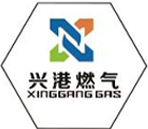
Aug . 12, 2024 00:44
Back to list
Understanding the Functionality and Importance of Pressure Reducers in Various Applications
Understanding Pressure Reducers Importance and Applications
Pressure reducers are essential devices used in various industries to maintain a consistent and safe pressure level in fluid systems. They serve a critical function, particularly in applications involving gases and liquids, where pressure fluctuations can lead to equipment failure, safety hazards, or operational inefficiencies. This article explores the concept of pressure reducers, their working principle, applications, and significance in everyday life.
What is a Pressure Reducer?
A pressure reducer, also known as a pressure regulator, is a mechanical device designed to reduce the input pressure of a fluid to a desired lower level. The primary role of this device is to ensure stable pressure downstream from the device regardless of the fluctuations upstream. In essence, it acts as a gatekeeper, carefully controlling how much pressure is allowed to pass through, thereby protecting downstream equipment from high pressure.
Working Principle
The working principle of a pressure reducer can be understood through basic fluid dynamics. When high-pressure fluid enters the regulator, it encounters a valve mechanism that automatically adjusts to maintain the set downstream pressure. Typically, this device includes a diaphragm that senses downstream pressure variations. When the pressure exceeds the preset level, the diaphragm moves to close the valve slightly, reducing the flow. Conversely, if the pressure drops below the desired level, the valve opens to allow more fluid to pass through. This automatic adjustment ensures a steady output pressure, thus providing a safe and stable operating environment.
Applications
Pressure reducers are used across various sectors, including
1. Industrial Manufacturing In factories and production lines, pressure reducers help manage the pressure of gases and liquids used in processes such as welding, coating, and chemical manufacturing. Maintaining the correct pressure is crucial for the efficiency of machinery and the quality of the finished products.
pressure reducer

2. HVAC Systems In heating, ventilation, and air conditioning systems, pressure reducers contribute to maintaining the appropriate pressure of refrigerants and ensure efficient operation, thereby enhancing energy efficiency and comfort.
3. Medical Applications In healthcare, pressure reducers are vital for oxygen supply systems in hospitals. They ensure that patients receive a consistent and safe oxygen flow, which is critical for patient care.
4. Gas Distribution Gas pipelines utilize pressure reducers to ensure that the natural gas delivered to homes and businesses is at a safe and usable pressure level. This application is essential for cooking, heating, and other domestic uses.
5. Automotive Industry In vehicles, pressure regulators are commonly found in fuel systems to maintain appropriate fuel pressure, optimizing engine performance and fuel efficiency.
Importance of Pressure Reducers
The importance of pressure reducers cannot be overstated. They not only enhance the safety of systems by preventing pressure spikes that could cause explosions or equipment failure, but they also improve energy efficiency. By ensuring that systems operate within the optimal pressure ranges, pressure reducers minimize waste and energy consumption, leading to significant cost savings for businesses.
Additionally, they contribute to the longevity of equipment. By protecting machinery from the damaging effects of high pressure, pressure reducers extend the life of components and reduce maintenance costs.
In conclusion, pressure reducers play a pivotal role in various applications, providing stability, safety, and efficiency in fluid systems. Their ability to regulate pressure automatically makes them indispensable in industries ranging from manufacturing to healthcare. As technology continues to advance, the development of more sophisticated pressure regulation systems will undoubtedly enhance operational efficiency and safety standards across various sectors. Understanding the function and importance of these devices is essential for anyone involved in managing fluid systems.
Latest news
-
Safety Valve Spring-Loaded Design Overpressure ProtectionNewsJul.25,2025
-
Precision Voltage Regulator AC5 Accuracy Grade PerformanceNewsJul.25,2025
-
Natural Gas Pressure Regulating Skid Industrial Pipeline ApplicationsNewsJul.25,2025
-
Natural Gas Filter Stainless Steel Mesh Element DesignNewsJul.25,2025
-
Gas Pressure Regulator Valve Direct-Acting Spring-Loaded DesignNewsJul.25,2025
-
Decompression Equipment Multi-Stage Heat Exchange System DesignNewsJul.25,2025

